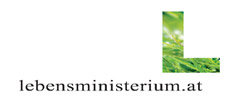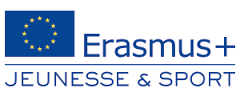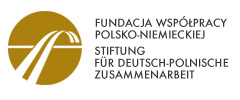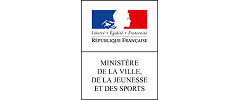International list of banned chemicals expanded
Chemicals restricted in 152 countries
08.11.2010 |IPEN Network
An international ban on nine toxic chemicals -- most of them pesticides and flame retardants -- will take effect Thursday, Aug. 26.
Blacklisted under the Stockholm Convention on Persistent Organic Pollutants, or POPs, the chemicals' use and production must be restricted in 152 countries. The United States has not ratified the treaty.
The chemicals: alpha hexachlorocyclohexane; beta hexachlorocyclohexane; chlordecone; hexabromobiphenyl; hexabromodiphenyl ether and heptabromodiphenyl ether (commercial octabromodiphenyl ether); lindane; pentachlorobenzene; perfluorooctane sulfonic acid, its salts and perfluorooactane sulfonyl fluoride; and tetrabromodiphenyl ether and pentabromodiphenyl ether (commercial pentabromodiphenyl ether).
Most of the nine are pesticides and flame retardants, and many have been phased out of production already. But they are still present in electronics, semiconductors and numerous other applications as a way to keep heat down. The insecticide lindane and perfluorooctane sulfonic acid or PFOS are still being produced.
"PFOS is a nasty guy, it may be the most nasty chemical of all POPs," said Paul Whylie, program officer at the Secretariat of the Stockholm Convention. "It is still being produced and used, mainly in China. Its uses are extensive; it's everywhere. If you test your blood right now, you'll find it there or at least in fatty tissue."
While the concentration determines whether a chemical has a toxic effect, even small amounts could act synergistically with other chemicals to produce an overall unknown effect, Whylie said.
"Chemicals are not simple things," Whylie said. "The debate rages on about synergistic effects -- preservatives in food, pollutants in cars, we take in so many pollutants, and we are not sure what is the synergistic effect."
The Stockholm Convention, brokered by the U.N. Environment Program, is a global treaty to protect human health and environment. It has been ratified by 171 parties, said Whylie, although Russia and the United States are not among them.
The United States signed the treaty in 2001 but has not ratified it, given that the U.S. Toxic Substances Control Act (TSCA) of 1976 is not in step with the Stockholm Convention. Congress is currently debating TSCA reform, and Sen. Frank Lautenberg (D-N.J.) introduced the "Safe Chemicals Act of 2010," which would revamp regulation of industrial chemicals.
To be listed in the Stockholm Convention, a chemical needs to be declared toxic, persistent in the environment, capable of accumulating in the body and able to move across boundaries. Such molecules can evaporate in Washington, D.C., for example, and re-emerge in Alaska a few days later.
Northern regions and Inuit Indians often have the highest concentrations of POPs since the chemicals travel to cooler regions and enter the food chain through fish, said Whylie. Indians who feed on seals ingest these chemicals that accumulate within fatty tissue.
New listings
Of the new chemicals listed, hexabromodiphenyl ether and heptabromodiphenyl ether are no longer produced, but these flame retardants are in use in common household products, Whylie said.
Alpha and beta hexachlorocyclohexane are byproducts from the production of the insecticide lindane. When factories produced lindane, they left behind stockpiles of the other two chemicals as well and they need to destroyed, Whylie said. Lindane itself is banned on the list, except for medical applications related to treating for lice and scabies.
Very few places continue to make pentachlorobenzene, but there could be unintentional production as a byproduct.
The convention is currently debating whether to list the pesticide endosulfan, short-chained chlorinated paraffins, and hexabromocyclododecane. Endosulfan is thought to be acutely neurotoxic and used in India, Brazil and Australia.
Not all nations that have ratified the convention maintain their obligations because developing countries do not all have the capacity to do so, said Whylie. The treaty lacks an enforcement component.
Mexico is one of the treaty signatories, having ratified it in 2003 but has not taken steps to control for the chemicals, said Fernando Bejarano, head of the nongovernmental Centre for Analysis and Action on Toxins and Their Alternatives (CAATA).
"Mexico is not taking seriously commitments made in the convention regarding informing the public about health and environmental risks," Bejarano said. "There is no implementation plan even though it's several years after the convention. The government doesn't have a strategic vision that provides long-term vision according to Stockholm Convention."
For more information visit: http://npogroups.org/lists/info/ipennetwork
Related News
Getting to the Future We Want
4-7 November, Brussels: European Environmental Bureau’s (EEB) Annual Conference
12.11.2018
Human Biomonitoring for Europe
Vienna, 26 September: stakeholder forum
28.09.2018
A life without plastic, wouldn't it be fantastic?!
Interview with Charlotte Schueler of @PlastikfreiLeben, who lives a zerowaste life in Munich, Germany and shares her experiences to her 25.2 thousand followers on instagram & 37.2 thousand followers on facebook
14.09.2018
Calling for periods free from plastic & hazardous chemicals
Letter to Frédérique Ries, MEP, European Parliament on behalf of the #BreakFreeFromPlastics movement
04.09.2018







































